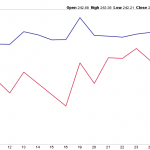by Benn Steil — co-authored with Emma Smith
How the Fed Should Tighten Monetary Policy
On January 27, the U.S. Federal Reserve held interest rates steady and, in a modest nod to a market that has been consistently more fearful about the economy than the Fed itself, dropped a line from its December statement saying that the risks to the outlook were “balanced.”

Clear signs of a deteriorating global economy reinforce our view that Richard Koo, chief economist at the Nomura Research Institute, is off the mark in his critique of the Fed’s approach to monetary policy.
In his recent article, Koo argued that the Fed is tightening monetary policy with the wrong tool. Rather than hiking interest rates (by raising its target for the short-term Fed funds rate), he writes, the Fed should sell bonds from its balance sheet, which has been inflated by years of quantitative easing. Indeed, at a size of $4.5 trillion, the balance sheet is now five times larger than it was before the economic crisis. Selling off assets would shrink banks’ excess reserves, he continues, reducing their incentive to lend. Rate hikes have the same effect, but Koo thinks that asset sales are better: if bond yields rise too much, or the economy turns sour, the Fed can just announce an extension of the zero-rate policy to “calm the markets.”
There are at least two major problems with Koo’s argument. The first is that he offers no numbers, and therefore no guidance as to how much tightening balance-sheet reduction would achieve relative to rate hikes. The second is that his logic is backwards.
Let’s first look at the numbers.
Longer-term bond yields in the market, which the Fed is looking to nudge upward, can be separated into two components. The first is the expected path of short-term interest rates. Changes in the Fed’s policy rate, its guidance about the pace of rate hikes, and the economic outlook all affect the expected path of short-term interest rates.















Leave A Comment